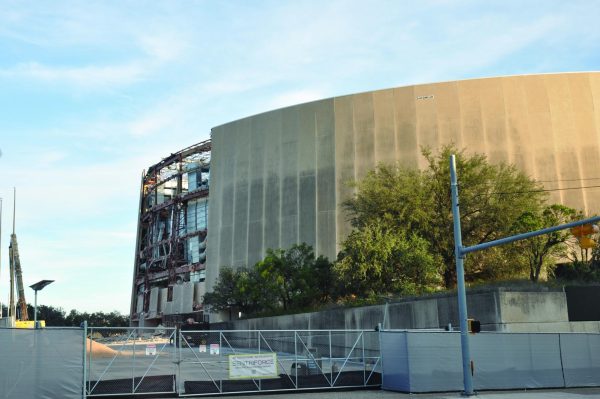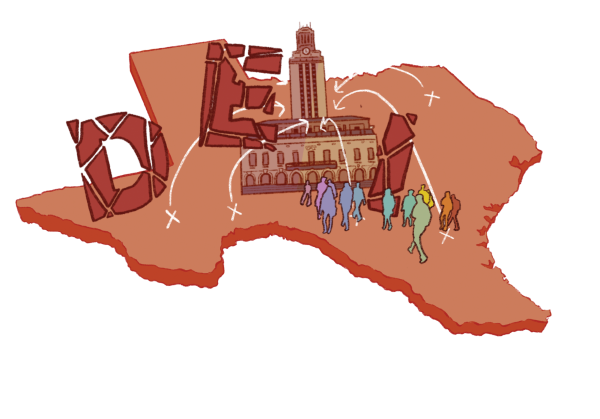Connecting Austin Through Proposition A
November 15, 2020
For weeks, Austinites have seen billboards and mail ads asking for their support of Project Connect. City politicians and residents all around Austin have differing views on the support of the project and how it will affect the city.
According to City Council Member Gregorio Casar, Project Connect is a plan created by the Council to provide better access to public transportation throughout the city of Austin. It consists of a main rail line running north and south down the spine of the city and connecting to the Austin-Bergstrom airport. The plan will also lead to the construction of an underground multi-block tunnel for an autonomous train below part of Austin’s downtown area. The project consists of two main propositions, Prop A and Prop B. Prop A mainly focuses on the construction of the light rail and underground tunnel, while Prop B is more centered around sidewalks and bike lanes. Austinites will decide on Nov. 3 whether to increase their tax rates to pay for the $7.1 billion, 15-year project.
Casar said that Project Connect will help people who need accessible transportation. He said it will also work toward making transportation more equitable and affordable in general.
“Project Connect is a comprehensive mass transit plan that will serve all the parts of the city where transit is needed the most, including our lower-income areas with buses and trains—plus a $300 million anti-displacement fund,” Casar said.
According to Casar, Project Connect has benefits for essential workers who still need to commute for their jobs in the age of COVID-19. Council Member Jimmy Flannigan, however, said that the main advantage of the plan is increased flexibility for everybody.
“It will create options,” Flannigan said. “If you live in a part of town that will have access to this future investment, you will now be able to reduce your reliance upon driving. Some folks may be able to not have a car at all and save tons of money. But it also benefits the people who aren’t going to use it. If you can get 10% of the people off the road, then the 90% are going faster. So it doesn’t just benefit the people who use it, but it benefits everybody else because it creates more options and more flexibility for people in their choice when it comes to getting around the city.”
According to Casar, one of the main negatives brought up about the project is the amount of taxpayer money that will go into funding and maintaining it. Casar said that it is better in the long run to fund the project now before inflation raises the cost even more.
“We needed mass transit in this city decades ago,” Casar said. “If we want to have an alternative to rush hour traffic, if we want to address climate change and if we want to be a more equitable and connected city, then we need to pass Prop A. It comes with a cost, and that cost would’ve been much lower if we had passed this 20 years ago. However, if we continue to wait, it will only get more expensive.”
Flannigan said that one of the main strengths of the project is its stability for the future. According to him, many cities in the past have tried to improve their transportation systems but have failed to set aside enough money to keep their transportation intact.
“In a lot of cities, what you’ll find is that they put a lot of money into building and don’t think about the long-term policies to operate or the long-term policies to do maintenance,” Flannigan said. “They get 20 years in, and they can’t afford to run the service or even repair the service.”
However, some residents of suburban areas of the city disagree with what Casar and Gomez see as beneficial with these propositions. Cynthia Dietz, a former teacher at Patton Elementary School and a member of the disabled community, does not support the proposition.
“Back when I taught, I had to take a bus,” Dietz said. “There is a Cap Metro stop at the end of my street, and it would have taken almost two hours and several bus changes to get to my job. Being in a wheelchair that’s not rainproof, that is an issue for many of the disabled community. The weather affects their different conditions, so we look at a lot of door-to-door stuff—the [Special Transit Services]—and of course, it takes forever for them to get you scheduled, and they don’t always show up on time.”
Concerns Dietz said she had about Project Connect were not only about the plan in relation to the disabled community. According to her, it would not be beneficial to suburban residents of the city in general.
“In southwest Austin, we’ve been often neglected and manipulated by Capital Metro and the city over the years,” Dietz said, “and this doesn’t really solve our transportation needs.”
Residents of Austin will vote on whether or not to go through with Project Connect on Tuesday, Nov. 3.Connecting Austin Through Proposition A









